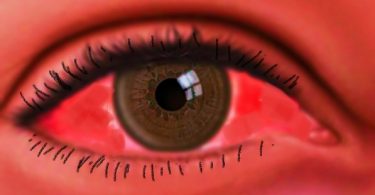Knee pain can be extremely painful and, if left untreated, could lead to serious consequences.
In this article, we’ ll explain everything you need to know about knee pain from causes to treatments. In addition, the article explores in-depth red light therapy – a trending treatment for knee pain.
How does knee pain occur?
Knee pain can occur due to multiple reasons. The most common ones are:
Osteoarthritis
Osteoarthritis is a common degenerative joint disease that primarily affects the cartilage, which is the smooth, slippery tissue that covers the ends of bones in a joint. It is the most prevalent form of arthritis and typically develops slowly over time, usually affecting older individuals.
Torn meniscus
A torn meniscus refers to an injury that affects the meniscus, a C-shaped piece of cartilage located in the knee joint. The menisci (plural of meniscus) act as shock absorbers, cushioning the joint and helping to distribute forces during movements like walking, running, and jumping.
A torn meniscus can occur due to various reasons, such as sudden twisting or pivoting motions, direct trauma to the knee, or degenerative changes that weaken the cartilage over time. Athletes, particularly those involved in sports that require quick changes in direction, are more prone to meniscal tears.
Rheumatoid Arthritis
Rheumatoid arthritis (RA) is a chronic autoimmune disease that primarily affects the joints, although it can also affect other organs and systems in the body. In RA, the immune system mistakenly attacks the body’s own tissues, primarily targeting the synovium, which is the lining of the joints. This immune response leads to inflammation, swelling, pain, and eventually damage to the affected joints.
Tendonitis
Tendonitis, also known
as tendinitis, refers to the inflammation of a tendon, which is the thick,
fibrous tissue that connects muscles to bones. It is a common condition that
can cause pain, swelling, and restricted movement in the affected area.
Tendonitis can occur in various parts of the body including the knees.
Bursitis
Bursitis is a condition characterized by the inflammation of a bursa, which is a small, fluid-filled sac located near joints. Bursae serve as cushions between bones, tendons, and muscles, reducing friction and allowing smooth movement. When a bursa becomes inflamed, it can cause pain, swelling, and limited mobility in the affected area.
Patellofemoral Pain Syndrome (PFPS)
Patellofemoral Pain Syndrome (PFPS), also known as runner’s knee, is a condition characterized by pain and discomfort around the front of the knee, specifically in the area where the kneecap (patella) rests against the thighbone (femur). It is a common condition that often affects athletes, particularly runners, but can also occur in non-athletes.
Overuse
Repetitive stress from activities and exercises such as walking, running, jumping, or prolonged kneeling can cause knee pain, especially if the body is not given enough time to rest and recover.
Regular treatment of knee pain
Appropriate treatment of knee pain can vary greatly, depend on individual differences and the seriousness of the ailment.
Pain relief medications
Knee pain relief medication refers to various drugs commonly used to relieve knee pain caused by arthritis, tendonitis, bursitis and other diseases. These medications help reduce pain, inflammation, and swelling in the knee joint, providing relief and improving mobility.
Yes, this is a solution that treats the symptoms but not the root cause. Life cannot be completely stopped before the root cause of the pain disappears. Painkillers are the way to let you move forward with less burden. But every year, many patients suffer from liver damage due to over-reliance on painkillers.
Physical therapy
Physiotherapy for knee pain is a non-invasive, conservative approach focused on improving knee function, reducing pain, and promoting healing, designed to strengthen the muscles around the knee, improve mobility, and enhance overall joint stability.
It includes pain management methods such as ice packs, heat packs, ultrasound therapy, and electrical stimulation therapy; mobility manipulation therapy involving fascia knife, massage, etc. to restore the knee joint and tissues; and some special strength, and functional training to restore your knee joint stability.
Surgical interventions
Surgical interventions for knee pain are typically considered when conservative treatments, such as medication and physical therapy, have not provided sufficient relief or when the underlying cause of knee pain requires surgical intervention. There are several surgical procedures that may be performed to address different knee conditions.
Surgical interventions for knee pain require careful consideration, and the specific procedure recommended will depend on factors such as the underlying condition, the extent of damage, the patient’s overall health, and their treatment goals. All surgeries have risks and may contain potential side effects even if performed successfully, so it’s essential to have a thorough discussion with an orthopedic surgeon who can evaluate your condition and recommend the most appropriate surgical approach.
Red light therapy for knee pain
Red light therapy, also known as low-level laser therapy (LLLT) or photobiomodulation therapy, is a non-invasive treatment method that uses specific wavelengths of red and infrared light to help reduce pain and promote healing in various conditions, including knee pain. It involves exposing the affected area to red light using specialized devices such as light-emitting diodes (LEDs) or lasers. Scientific experiments[1] have repeatedly shown that red and infrared light can work for knee pain relief. The treatment is also much safer and affordable compared with traditional laser therapy.
How red light therapy works for knee pain
Red light therapy works by delivering photons of light energy to the tissues in the knee. These photons are absorbed by the cells within the tissues, primarily by structures called mitochondria. The mitochondria then use this energy to produce more adenosine triphosphate (ATP), which is the cell’s energy currency. This increased ATP production can enhance cellular metabolism and promote tissue repair, reduce inflammation, and alleviate pain. It has been found to have analgesic (pain-relieving) effects.
Red light therapy can work for pain associated with knee conditions such as arthritis, torn meniscus, osteoarthritis, tendinitis, and bursitis. By modulating inflammation, improving blood flow, and stimulating tissue repair, red light therapy alleviates pain and promote a faster recovery.
Inflammation is a common contributor to knee pain. And red light therapy has shown anti-inflammatory effects [ 2] by reducing the production of inflammatory mediators and promoting the release of anti-inflammatory molecules. By modulating the inflammatory response, red light therapy may help reduce swelling, stiffness, and pain in the knee joint.
The treatment can also promote tissue repair and healing by stimulating collagen synthesis, enhancing blood circulation, and accelerating cellular metabolism. These effects can help in the regeneration and repair of damaged tissues, such as cartilage, ligaments, and tendons in the knee.
Best red light therapy devices for knee pain
Here we recommend two of the best red light devices for knee pain on the market.
Scienlodic Red Light Therapy Wrap for wrist pain
The red light therapy wrap kills your knee pain and inflammation for good. The 3-in-1 medical-grade LEDs emit both red light and near-infrared light, which penetrate your skin and get to the very source of your pain and inflammation. Combined with its flexibility, the wrap serves as an effective treatment for all kinds of knee pain and inflammation.
Pros:
l Warm and soft touch reduces discomfort during wrapping
- No record of side effects
- 210 medical-grade LEDs that emit powerful light. It utilizes advanced 660nm and 850nm wavelengths.
- The inner layer is equipped with a water and oil repellent layer for easy cleaning.
Cons:
- Not specifically designed for knee pain, but comes with the right red light
Kineon The MOVE+ Pro LED & Laser
It is designed to alleviate joint pain. This innovative solution features a compact yet powerful array of light beads and includes a detachable laser module, not many but enough. The device’s unique shape allows for targeted treatment of various joints.
Pros:
l The portable design enables you to use it anytime and anywhere.
- Comprehensive coverage
- Effective pain relief at 650nm and 808nm wavelengths, where 808nm red light is released by the laser module.
Cons:
- Pulse mode cannot be adjusted
- Each module has a limited number of lamp beads, so most of the time it can only be used for joint pain management.
Conclusion
This article delves into the causes and treatments of knee pain, with a focus on the intriguing realm of red light therapy benefits for pain.
Conditions such as torn meniscus, rheumatoid arthritis, tendonitis, bursitis, and patellofemoral pain syndrome contribute to knee pain. Traditional treatments include medication, physical therapy, and surgery. However, red light therapy emerges as a trending option. By utilizing specific wavelengths of red and infrared light, this non-invasive approach can alleviate pain, reduce inflammation, and promote tissue repair. Devices like the Scienlodic Red Light Therapy Panel and Wrap emit therapeutic light, providing relief for back pain, joint pain, knee pain, and aiding wound healing.





